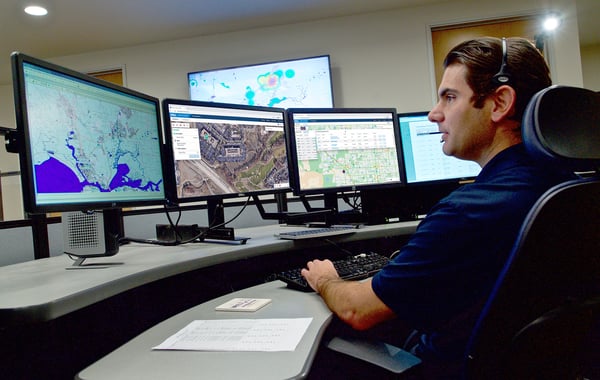Meet the New ZOLL Dispatch and ZOLL Respond CAD Solution
Emotional Strain and Mental Health: Using ePCR Data to Transform the EMS Culture
Long shifts, low pay, and repeated, vicarious traumas are givens for paramedics and other EMS professionals
Was this information valuable?

Long shifts, low pay, and repeated, vicarious traumas are givens for paramedics and other EMS professionals. Enduring the physical and emotional challenges of the job have historically been somewhat of a badge of honor. Acknowledging the mental toll, whether triggered by a high acuity incident or as a consequence of chronic stress, historically has been a sign of weakness.
Yet, it is a tall order to expect providers to bury their feelings while absorbing the combined stresses of the job, home life, and extrinsic factors (the coronavirus pandemic, civil unrest, and increased job and financial uncertainty, for example). Adding to the pressure, providers regularly sign on for extra shifts or work for multiple services, just to make ends meet. Downtime and sleep can be scarce. It’s too easy to become numb to the warning signs of exhaustion and emotional strain.

"Burnout” is the catch-all term used to describe a host of behavioral changes. Paramedics and other EMS professionals who are battling stress tend to become disengaged and may seem preoccupied. They may retreat from their peers, make medical errors, or become increasingly casual about following protocols. Sometimes their actions are almost robotic, lacking attentiveness to patients in their care. When a good provider starts exhibiting these and other changes, it’s the responsibility of the agency’s leadership to recognize burnout and to provide support before the problem spreads to other providers or causes harm to patients.
Only recently has the EMS industry acknowledged the importance of physical and emotional well-being and begun to take steps to change the culture. There is a growing movement to recognize stress indicators early and to provide support or intervention. With little precedent for how to do that, data can guide agencies as they pioneer equitable policies and procedures.
Creating an Objective Framework for Recognizing Stress
Progressive agencies understand that destigmatizing mental health issues is the first step toward a more supportive and enlightened culture. Combatting negative perceptions becomes easier when intervention is based on a set of objective criteria, rather than on subjective assessments. Agencies already collect data that can be analyzed to track situational and behavioral changes that signal potential mental health vulnerability. Here are three examples:
Standard Performance Benchmarks. When an individual who is typically a high performer starts logging longer chute times, their IV success rate drops, etc., standard performance benchmarks can help identify those issues early and prompt supervisors to take a closer look. Important benchmarks to monitor include chute times, procedure success rates, percentage of calls with a refusal or non-transport disposition.
Type of Call. Tracking the types of calls crews are running can help establish which calls are contributing most to crew stress and help supervisors anticipate, prevent, and respond to developing morale issues. Examples of high-stress calls include acute patients, emergency traffic incidents, multiple ambulance events, and call involving pediatric patients. Also note COVID-suspected calls to review how long crews spent with COVID patients and to note their health and PPE status.
COVID-19 Safety Compliance. One of the newest measures that agencies should track and monitor is COVID-suspected calls. Review how long crews spent with COVID patients, and note their health and PPE status. Monitoring safety compliance is not only required, it can also reveal crew stress issues. The heightened anxiety related to potential COVID-19 exposure and the extra safety and decontamination compliance rules are leading contributors to burnout. At the same time, burnout can cause non-compliance. Medics who “check out” and become sloppy risk spreading disease to other crew members, patients, and their own families.
Agencies also can run standard clinical and operational performance reports and analyze the data. For example, if the number of calls with a refusal or non-transport dispositions are increasing over time, look for the trend drivers. If response times are getting longer, determine whether that is due to external factors or to burnt out crews being slow to get off the couch. Monitor success rates by agency and by individual, watching for metrics outside of the norm (e.g., IV success rate more than two standard deviations from the mean).

Devising an Agency Response Plan
When an individual or crew is recognized as suffering from burnout or emotional distress, agency leaders need to act. Ideally, they should establish a policy that outlines behavioral norms and details procedures for addressing mental health issues and promoting emotional well-being. Supervisors and administrators who use a standardized and just approach can address individual issues effectively. Leaning on the policy and procedure means creating a mechanism for improving performance and responding to mental health concerns without stigma or the appearance of punitive action. A standardized approach also demonstrates commitment to a progressive, empathetic culture that recognizes the health impact of working in a high-stress profession and is prepared to support its own when the going gets tough.
Historically, the EMS industry’s approach to mental health has been haphazard. Agencies that offered any support at all would either kick the issue to human resources or perhaps refer an individual to a psychologist. These ad hoc approaches don't do anything to address agency-wide morale or to change negative perceptions about mental health issues. An effective mental health program should be developed and administered by professionals who are trained to use techniques like preparedness training and Critical Incident Stress Debriefing (CISD) — a small group, supportive crisis intervention. Access to therapy may also be in the mix, as may be an administrative leave policy or other tools that support recovery. Regardless of what the program includes, supervisors and administrators will want to present and promote the program to crews and reinforce the message that it’s OK not to be OK.

Numerous Benefits for Individuals, Crews, and Agencies
Transforming the industry culture into one that recognizes the seriousness (and normality) of mental health strain will take time. The first and best step to getting there happens at the agency level.
When individual providers are supported at the first signs of stress, they have less opportunity to damage crew morale with their negative attitude and/or behavior. In turn, the crew is less likely to push bad feelings out into the rest of the agency. Beyond morale, catching burnout early is an important risk management strategy that has implications for everything from disposables, to equipment maintenance, to compliance and liability.
Treating mental health strain has benefits for the community, too. Emotionally healthy providers are more empathetic toward patients and more attuned to important details that can impact patient outcomes.
Paramedics and EMS professionals, without a doubt, have one of the toughest jobs out there. Day in and day out, they willingly shoulder the physical and emotional burdens of the job out of passion for their profession and dedication to their communities. While that may be part of the job description, it doesn’t mean that providers must go it alone. Creating a culture of mental health awareness and offering support when needed will help ensure that they enjoy a long, rewarding career in the industry.
Read More on New Perspectives in EMS:
Related Posts
Collect More Revenue Faster: The Pivotal Role of Clear, Concise, and Complete Documentation
ZOLL Pulse Blog
Subscribe to our blog and receive quality content that makes your job as an EMS & fire, hospital, or AR professional easier.
ZOLL Pulse Blog
Subscribe to our blog and receive quality content that makes your job as an EMS, fire, hospital, or AR professional easier.




